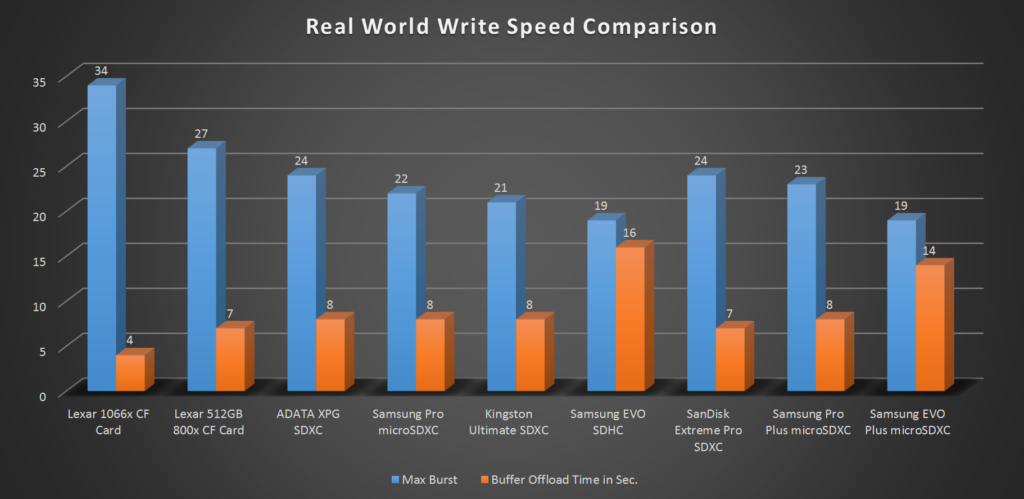REAL WORLD TESTING
For our real world testing, we will be comparing how long it takes for our Canon 5D Mark IV’s image burst buffer to offload onto the cards after it fills, as well as continuous bursts before slowing. For standardization and comparison, the camera settings will be shooting at ISO 100, 1/160th of a second, aperture f/4 with all pictures in RAW format. With most DSLR cameras, there is no slowing whatsoever at any point in time when saving to JPG.
Although this chart does an absolute great job of identifying the jump CF cards have on SD cards with respect to max burst in continuous shooting, it also clearly demonstrates the difference between the Lexar 1066x that we previously reviewed, and this Lexar 800x 512GB CF Card. Not only iis the burst total reduced slightly, but also, we can see that the time it takes to offload the buffer is almost doubled. This is the main characteristic that will separate these two cards.
REPORT SUMMARY AND FINAL THOUGHTS
Anyone who works in the media industry knows that Lexar stands above the rest. They always have. It’s not their lifetime warranty, as reflective as that is of their trust in their own product, or even the fact that they will continue to push to be the best in the market with the top capacity. It’s the people who buy their products who have built this reputation for them throughout many years, making the Lexar name what it is today, No. 1.
When last we reported on a Lexar product, it was the 1066x CF Card and it showed its colors as the top performer in the market today. Today, we are reporting on the lexar 800x 512GB CompactFlash Card, Lexar being one of few companies to even market a card of this capacity. Admittedly, it is a bit pricey but this card is still a rocket ship and performs like few others. We would be remiss to not once again award this product with our editor’s Choice!
 The SSD Review The Worlds Dedicated SSD Education and Review Resource |
The SSD Review The Worlds Dedicated SSD Education and Review Resource | 

